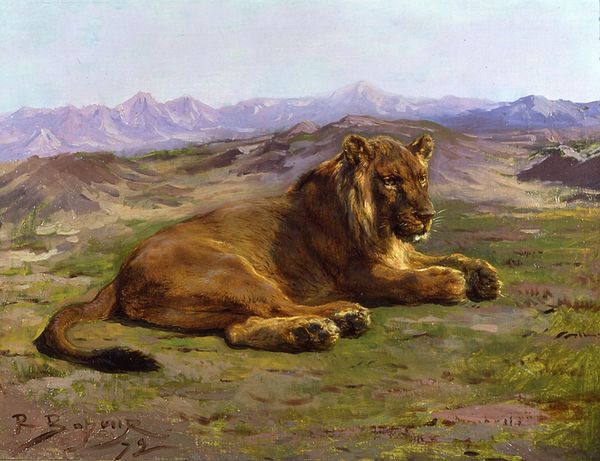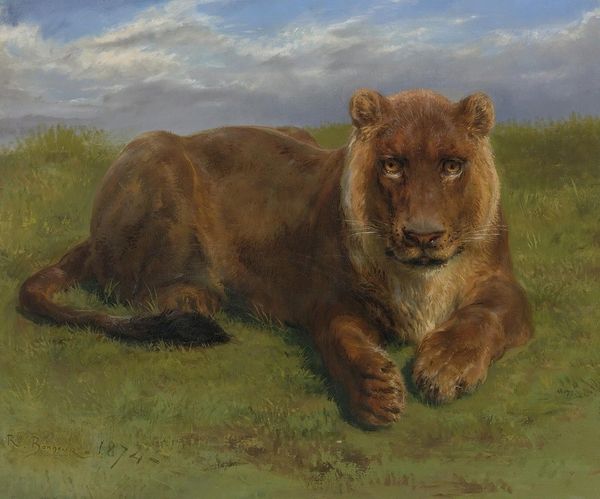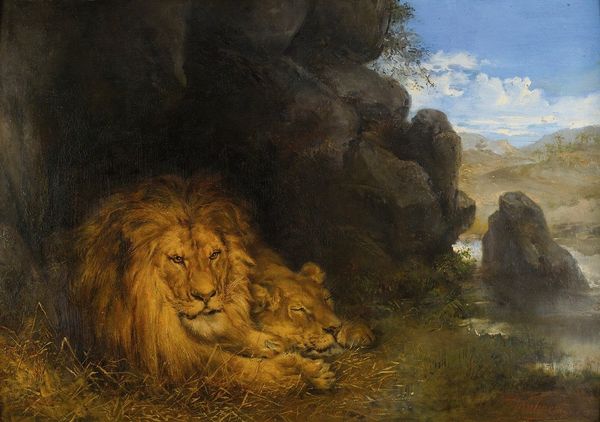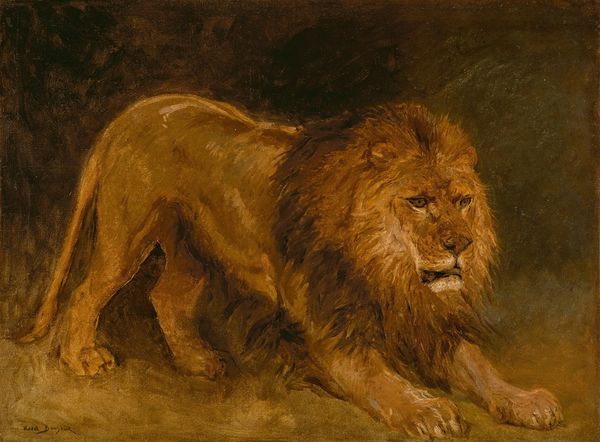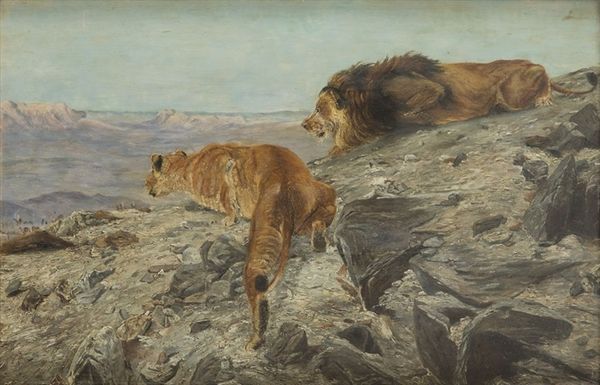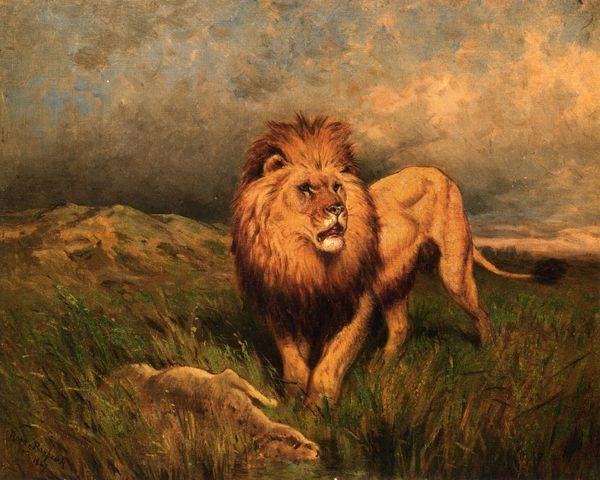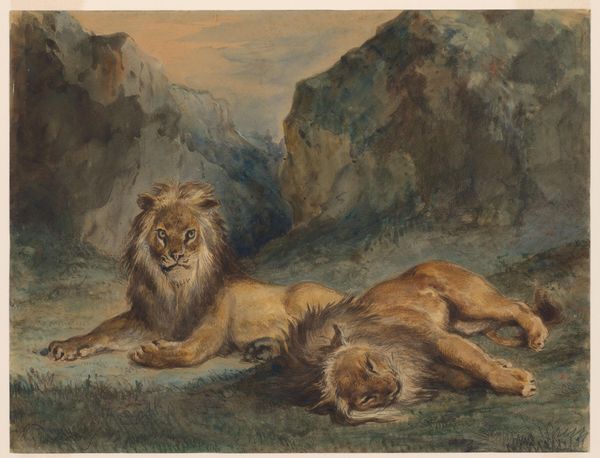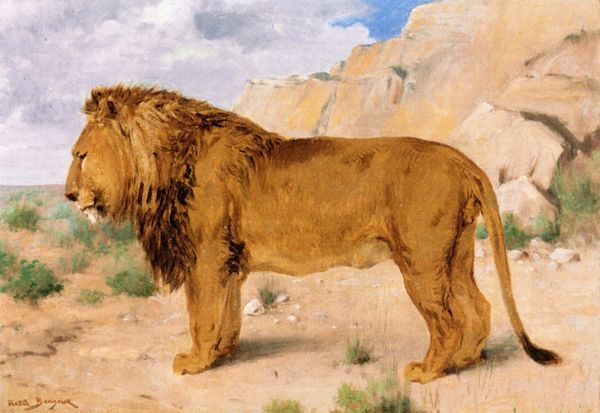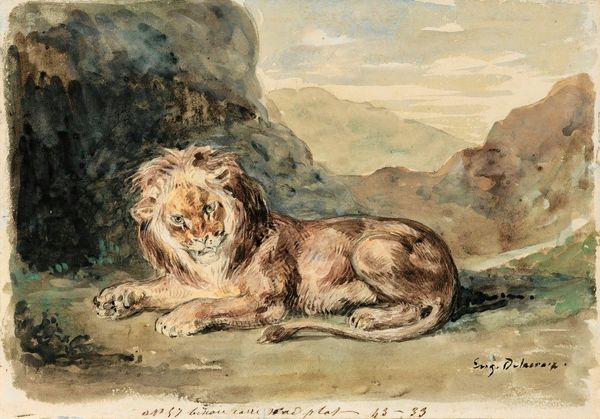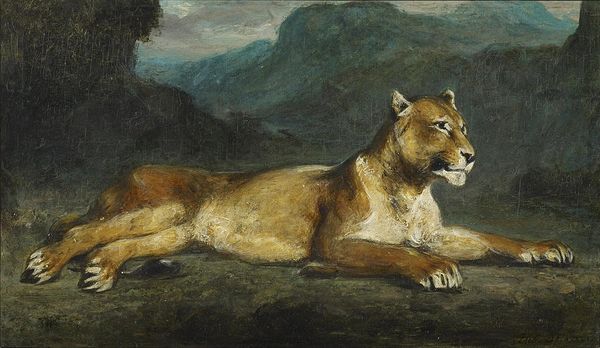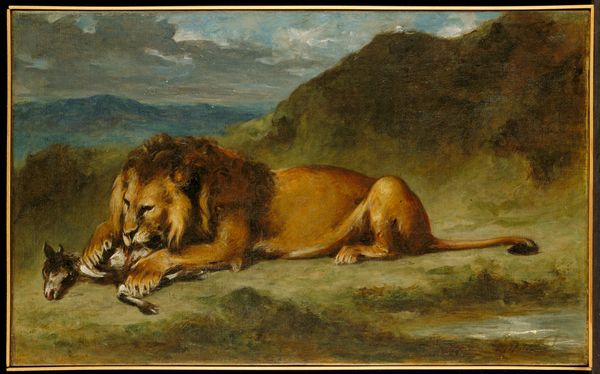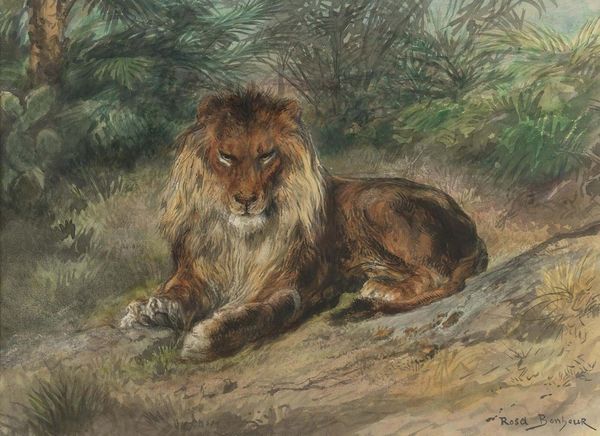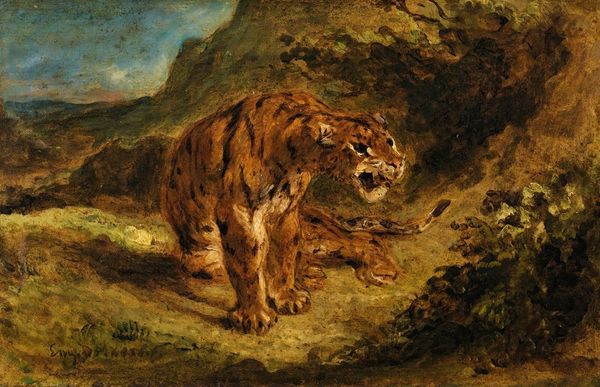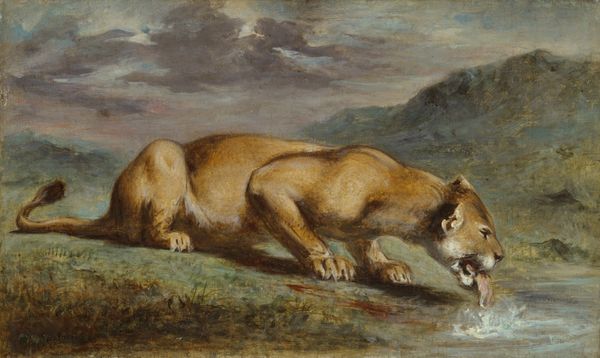
Copyright: Public Domain: Artvee
Editor: Here we have Rosa Bonheur's "Lion in a Mountainous Landscape," painted in 1880 using oil paint. It strikes me as very majestic, powerful, the way the lion stands, but the scene itself seems… desolate. What draws your attention most when you view this work? Curator: I am particularly interested in Bonheur's process here. Her noted dedication to anatomical accuracy likely involved extensive study – perhaps even dissection – revealing a hands-on engagement with her subject. But it also involved, inescapably, economic structures. Someone had to procure these materials, prepare them; and what did it cost to acquire exotic animals for her study? How does the painting itself become a kind of commodity within this landscape? Editor: That’s fascinating; I hadn’t considered that at all. The 'realism' she achieves clearly depended on some serious resource extraction and, dare I say, exploitation. Did Bonheur ever acknowledge this side of her art-making? Curator: Not explicitly. However, her embrace of traditionally masculine attire, which allowed her easier access to livestock markets and farms, hints at a consciousness of disrupting established norms, challenging conventional labor divisions in pursuit of her artistic goals. Perhaps this transgressive positioning indirectly acknowledges, if not explicitly critiques, societal constructs related to labor. How do you think her success shaped views around women artists using these materials? Editor: I suppose seeing a woman so expertly manipulate materials and achieve such recognition chipped away at those gendered boundaries. Curator: Exactly. By mastering these tools and processes – historically coded male – Bonheur both affirmed and redefined artistic labor for women. And her ability to make commercially-successful art helped set the stage for further professional opportunities for female artists. Editor: So, on the surface, it’s a striking image of a lion, but digging into the details of how the image came to be, who profited and who had access to what – gives it another layer of complexity altogether. Curator: Precisely. It reminds us to think about the conditions in which art is produced, not just what's represented on the canvas.
Comments
No comments
Be the first to comment and join the conversation on the ultimate creative platform.
